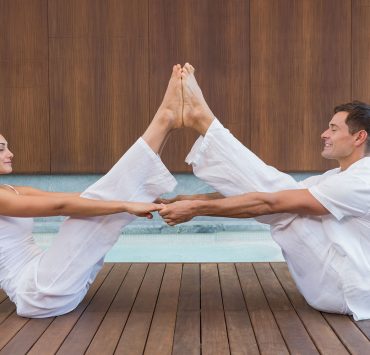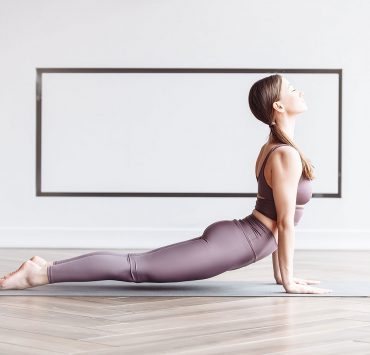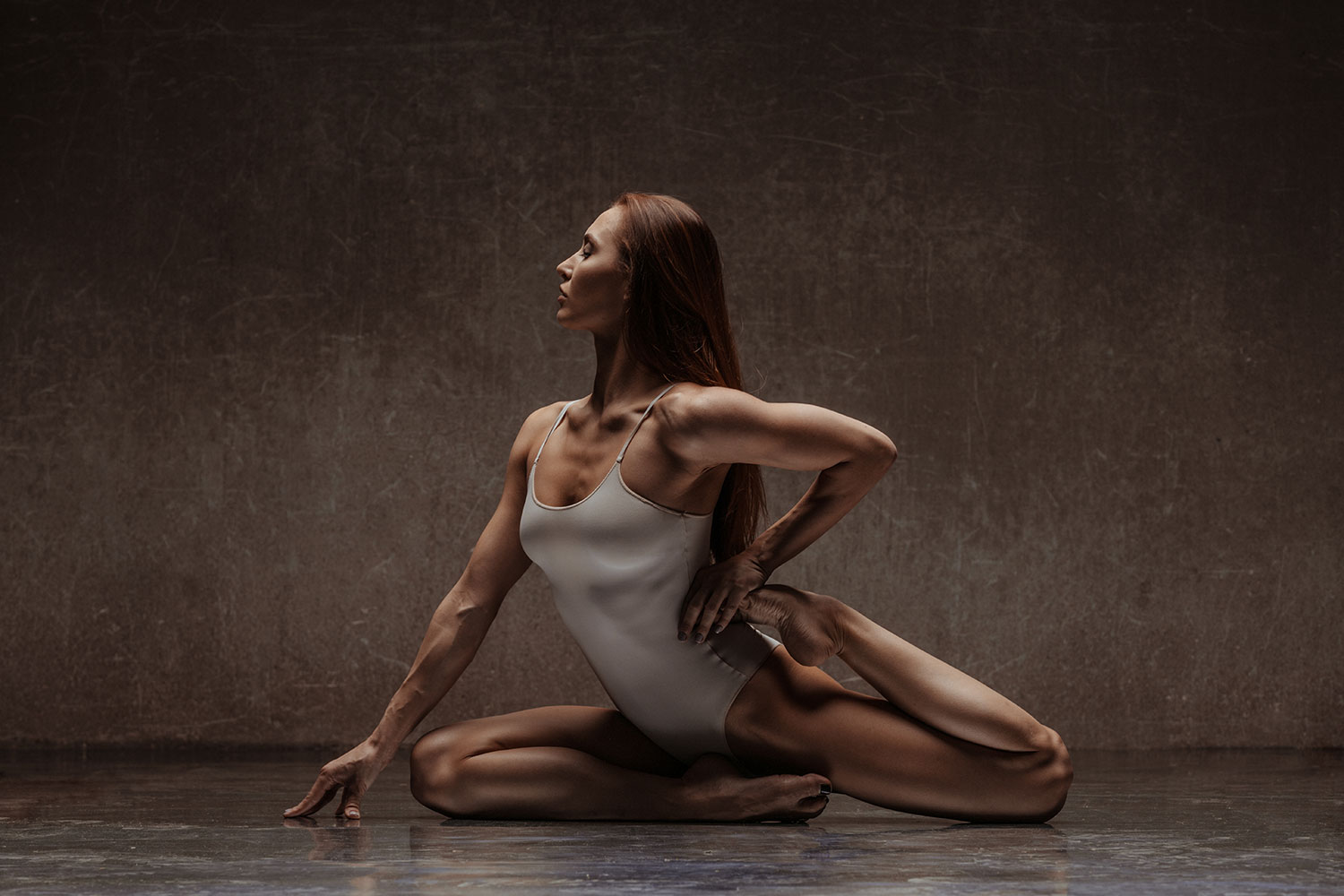
Former nutrition specialist Alexandra Mackenzie knows what it means to…
Yoga requires you to lift the entire weight of your own body in certain poses, developing your core muscles and toning different parts of your body.
So is it possible for yoga to replace your strength training altogether?
The answer is, in some ways, yes.
Health professionals advise that strength training should be at least twice a week within your exercise regimen to keep your metabolism running efficiently.
But yoga also offers some alternatives if you’re not into dumbbells, weight machines, or resistance cords.
However, the focus is yoga is not about sculpting the physique. It encompasses a philosophy and lifestyle that is much more in depth than attaining a particular body type. This doesn’t discount the strength training and toning yoga can provide for the body but at least provides some context for yoga as a comprehensive practice.
Perhaps the biggest difference between strength training and yoga is that yoga’s requirement to lift your whole body weight often takes more time, skill, and determination.
But first, let’s be clear about all of the differences between strength training and yoga.
Traditional Strength Training
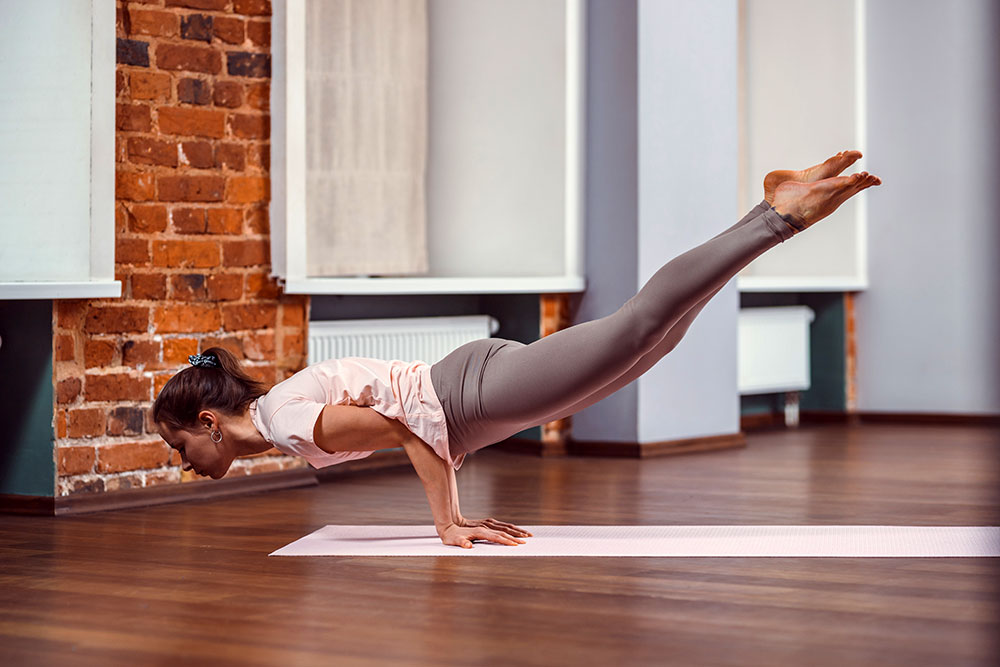
Traditional strength and weight training is the more practical approach if you’re looking to build bulk within specific parts of your body.
In practice, strength training uses a progressively heavier resistance to strengthen the musculoskeletal system.
This requires your muscles and bones to be overloaded in order to keep developing in mass.
As your muscles adapt to the resistance and get stronger, you ultimately need to bear progressively heavier weight in order to achieve the same results.
Weight training also typically isolates certain muscle regions whereas yoga stimulates all of your muscles at once.
Overall, between progressively heavier resistance and isolation of muscle regions, yoga can provide a more balanced way to strengthen and tone your body.
Benefits of Yoga for Strength Training
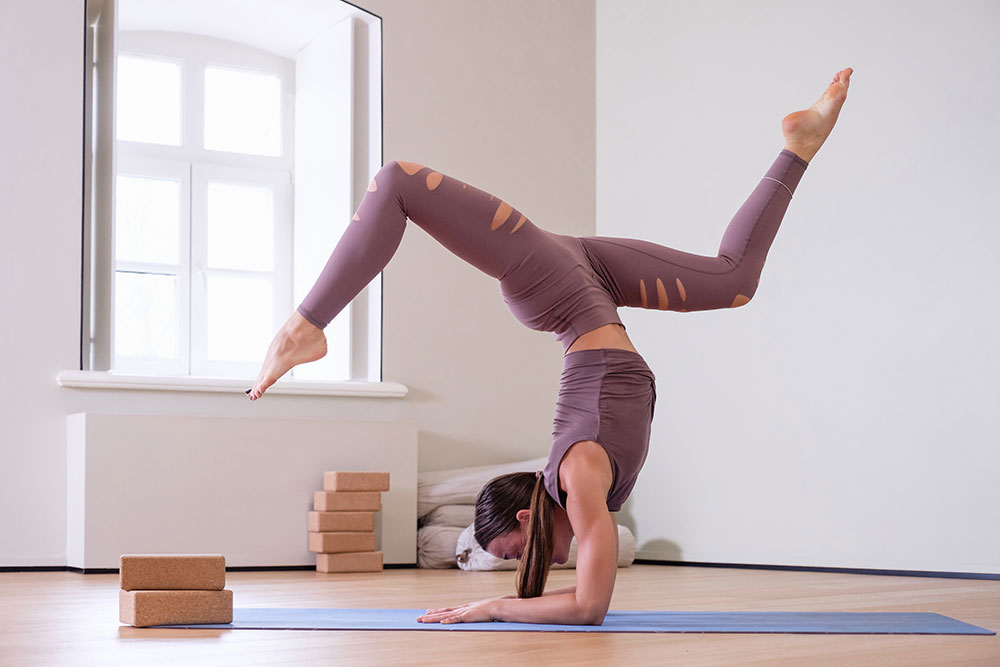
A regular yoga practice can reduce your risk of injury and condition your body to perform better at everyday tasks like walking, sitting, twisting, bending, and lifting groceries.
Yoga acts as a more functional fitness that moves the body in ways it was designed to move.
Using both large and small muscle groups, yoga moves these muscle areas in many different directions as opposed to weight training.
With a typical bicep curl, you’re likely utilizing only a one-dimensional plane of motion going forward and back, limiting the ways in which your muscles can actually grow.
In this way, yoga tones the muscles all over your body and balances them with each other.
Yoga can also enhance your muscle endurance as you hold poses for a longer period of time.
Another difference between yoga and strength training is the ways in which they approach the muscle.
Yoga relies on eccentric contraction.
This means that the muscles stretch as they contract, giving your muscles that sleek, elongated look while increasing flexibility in your muscles and joints.
Alternatively, weight training relies on the opposite.
In practice, weight training focuses on concentric muscle contraction. This means that the muscles get smaller as they contract.
Without the proper stretching, these muscle fibers heal closely together giving that overall compact and bulging look.
All of this is to say that each form of exercise has its benefits.
But if you’re curious about what yoga poses are prime for strength training, follow this list to tone your muscles without all of the heavy equipment.
Navasana – Boat Pose
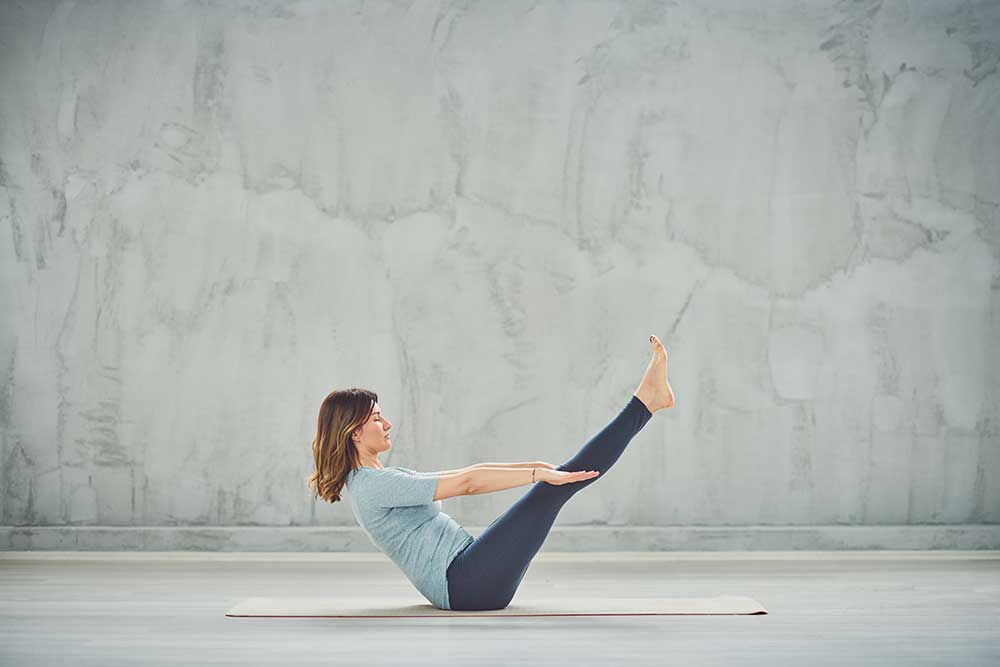
This yoga pose works the abs and hip flexors while requiring you to balance your entire body weight on your sitz bones and tailbone.
In this posture, you have to maintain lift in your entire body using the strength of your core. This pose can also be done as a static posture or a dynamic one. You can move between lengthening your body and contracting back in to resemble a traditional ab crunch.
Utkatasana – Chair Pose
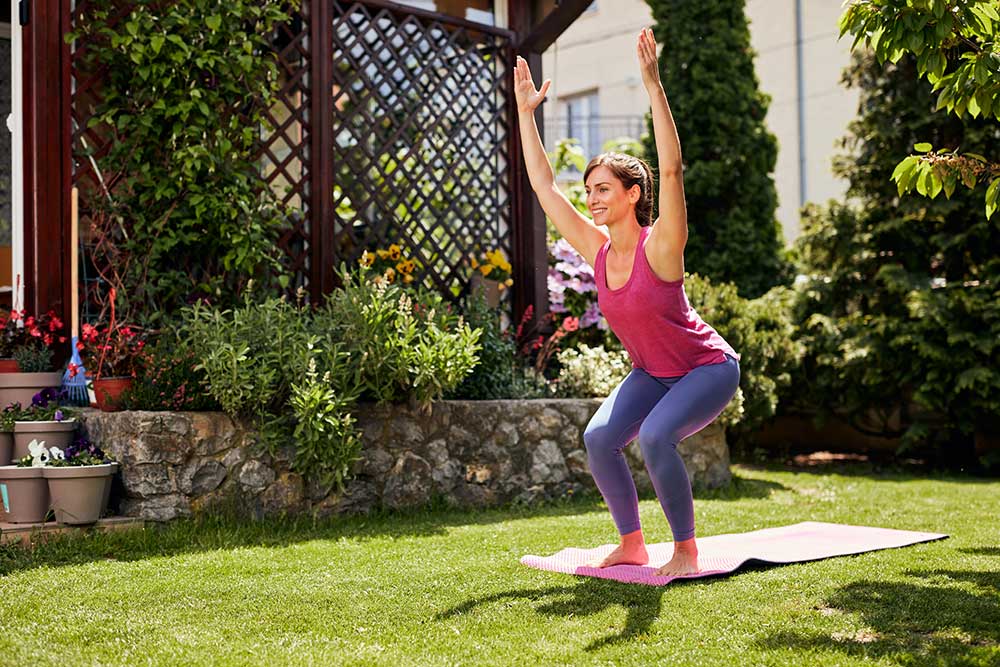
Chair Pose is a great way to do squats without requiring heavy weights to strengthen your body.
With your feet together, your quads and glutes are activated as your legs support your entire body weight within a narrow frame. It also engages and activates your legs and glutes while requiring a strong core and lower back for maintaining balance.
You can stay in this pose for a long period of time, relishing in the burn that runs up and down your legs, or you can incorporate this posture throughout your day to keep your body strong.
Chaturanga Dandasana – Four-Limbed Staff Pose
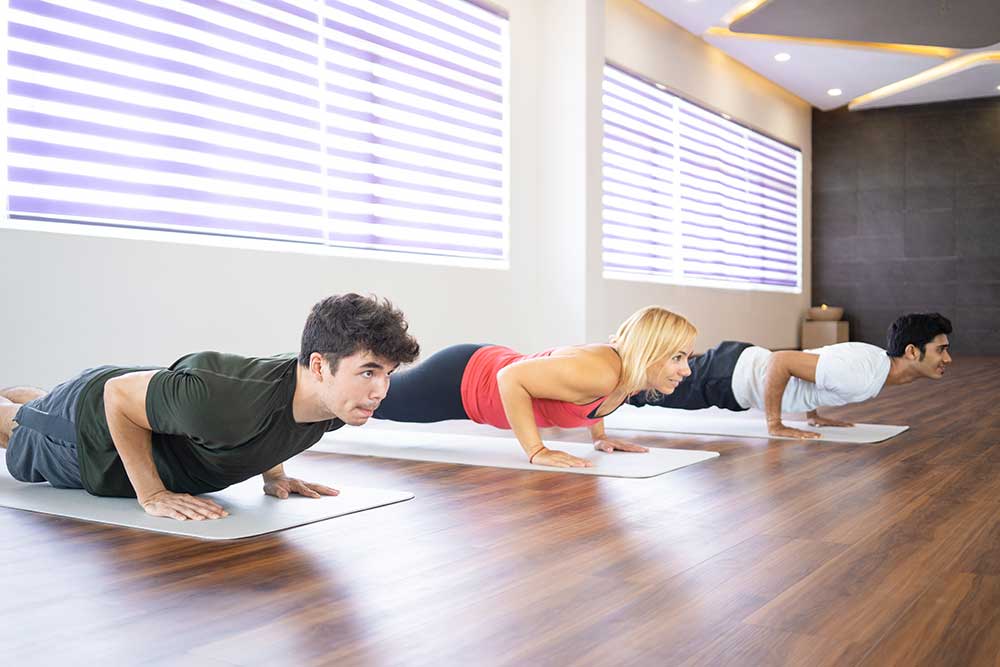
Chaturanga is most frequently used in vinyasa yoga classes as it is one of the most difficult postures to master.
Some consider it a yogi style push-up depending on whether you keep the pose static or make it dynamic.
This pose is all about sculpting the shoulders as you lift your entire bodyweight above the ground with your arms and toes. It can be used in your practice as a transition to Downward-Facing Dog or it can be held in position for however long if you’d like to challenge yourself.
Salabhasana – Locust Pose
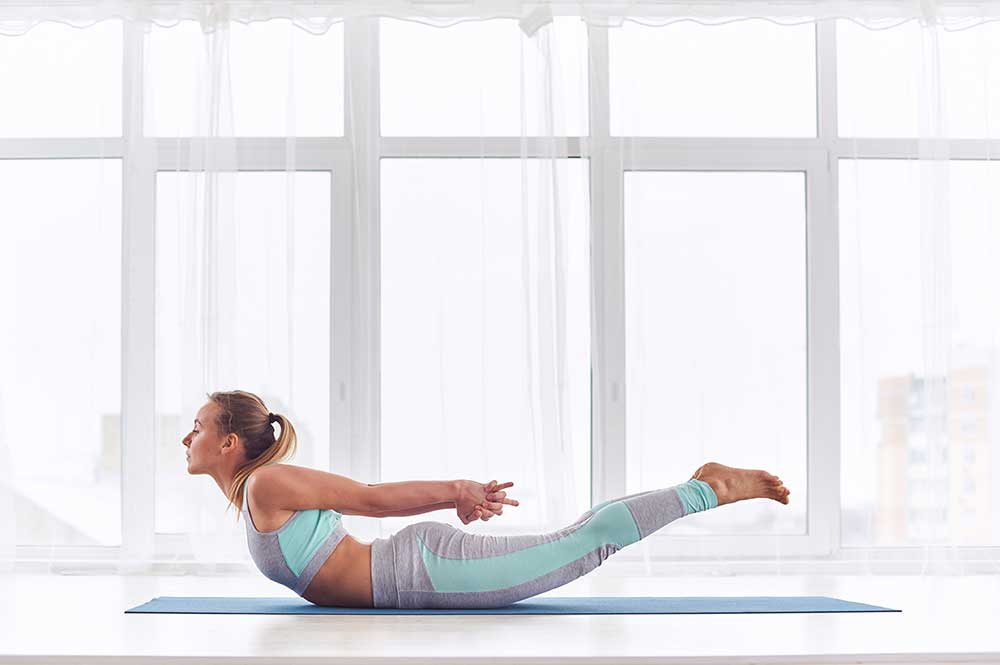
This pose strengthens the back of your torso, legs, and arms while targeting your core muscles.
Lifting your entire body weight and balancing on your pelvis, you are not only working on your strength but following the ebbs and flows of your breath for concentration and breath meditation.
Kumbhakasana – Plank Pose
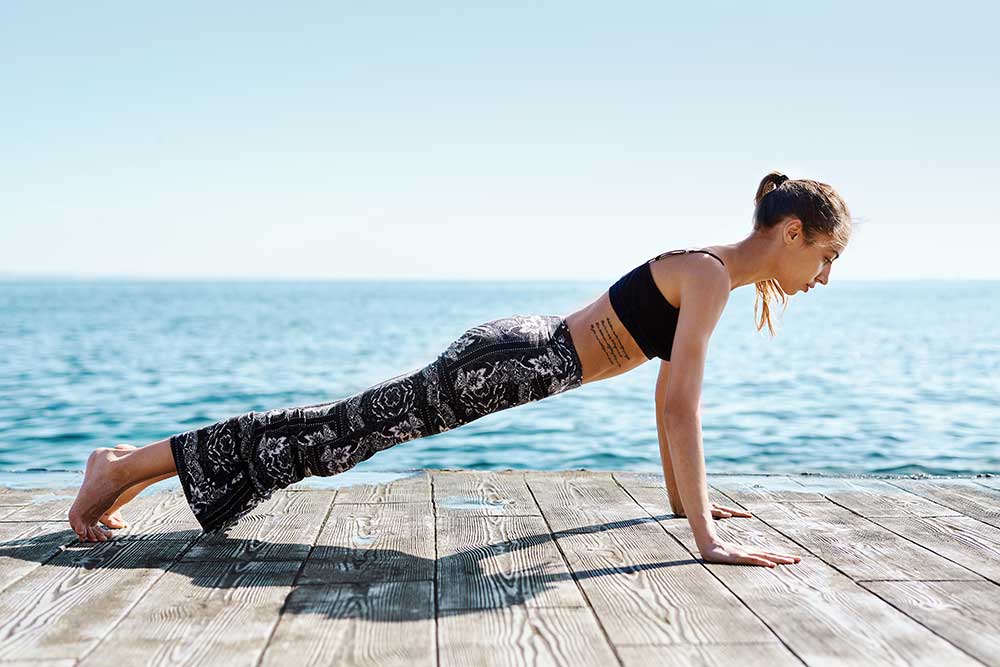
Plank pose helps to build your upper body strength while fortifying the muscles in your core.
It also helps to maintain alignment throughout your whole body and conditions your muscle endurance and stamina.
There are many different variations of this pose including high planks on your hands and low planks on your forearms. These variations target different muscle groups but all require you to lift the entire weight of your body to get stronger.
Vasisthasana – Side Plank Pose
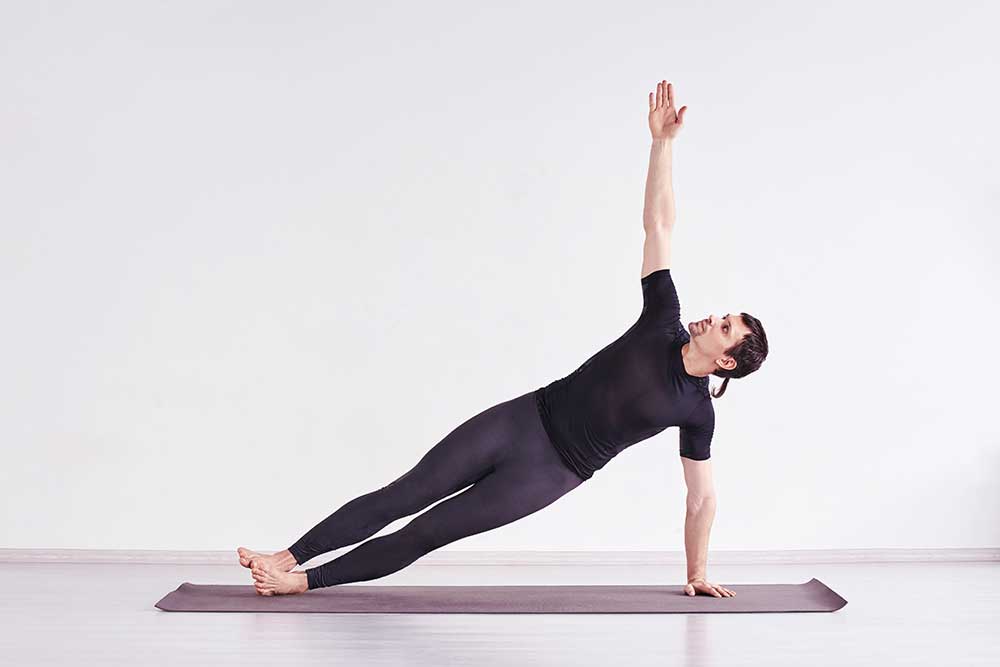
A powerful arm and wrist strengthener, this position requires both balance and focus.
If you need a modification for this pose, you can always lower your bottom knee down to the ground.
Lifting weights can often cause wrist injuries but this pose actually helps to strengthen your wrists as well as your biceps.
Purvottanasana – Upward Plank Pose
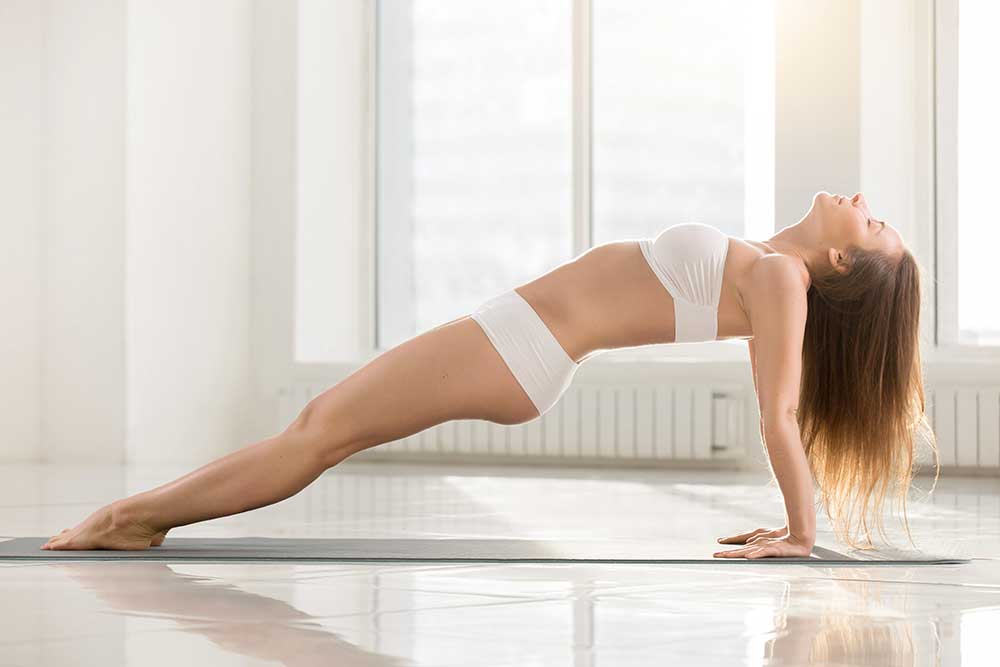
If you’re looking to strengthen your arms, wrists, and legs while stretching multiple parts of the body, this is the pose for you.
Stretching the pectoralis major and minor as well as the anterior deltoids, this posture also helps to sculpt your core muscles and can easily replace dumbbells in your practice.
Vrikshasana – Tree Pose
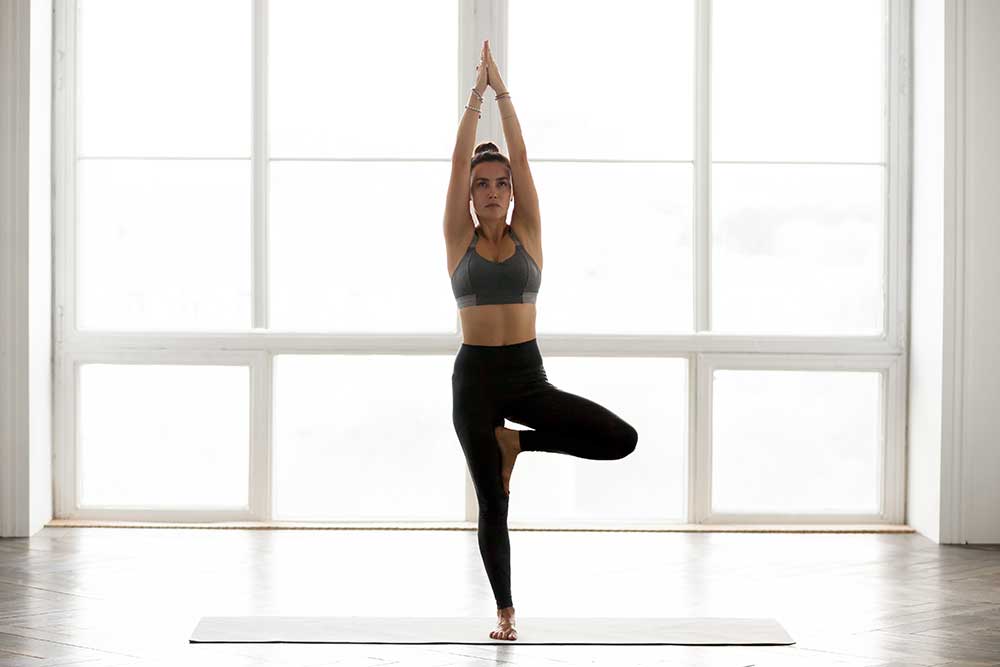
A single-leg tree pose helps the body root through the ground, establishing an overall sense of balance.
Working as a stabilizer for the muscles around your ankle, knee, and hip of your planted leg, tree pose also stretches your groin and opens up your hips.
Virabhadrasana III – Warrior III
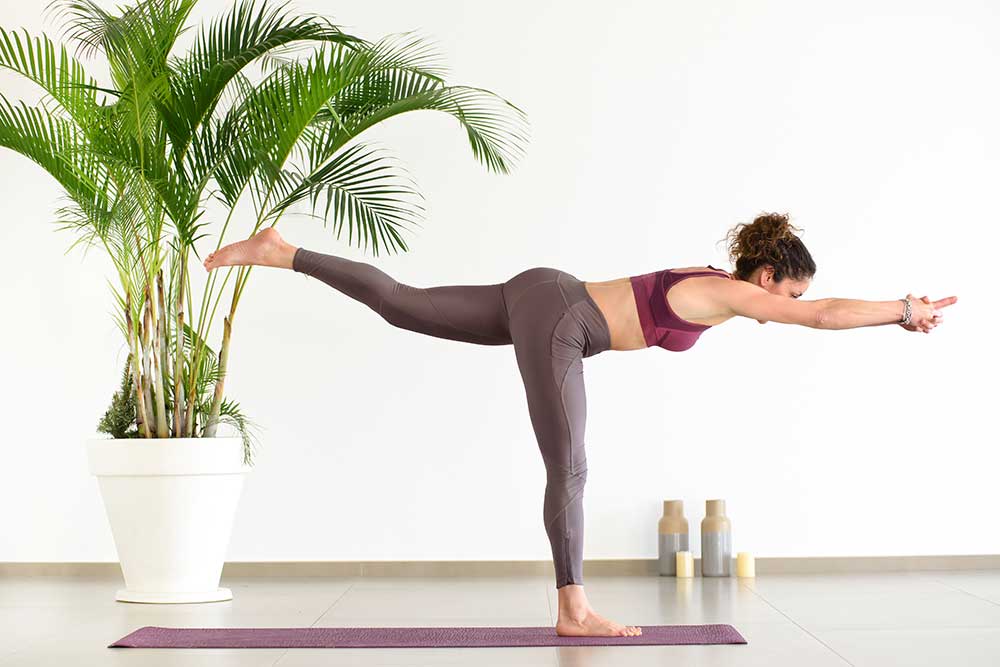
The single-leg nature of this pose requires balance as you engage your core.
Its forward-leaning orientation makes you lift your entire body weight up from off of the ground while stabilizing the muscles in your leg, ankle, and foot.
Setu Bandha Sarvangasana – Bridge Pose
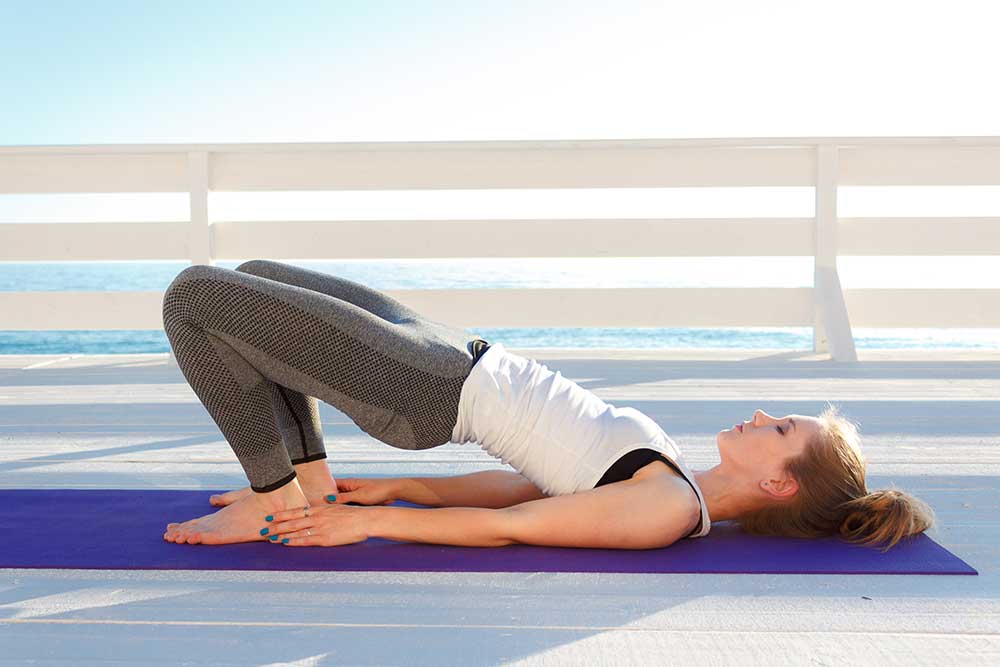
Squeezing in your legs, glutes, core, and lower back, this pose is great for lower body strengthening.
Bridge pose can open up your chest and shoulders, should you choose to clasp your hands underneath for chest expansion. It also gives your spine and hip flexors a good stretch while aligning your posture.
Final Tips for Strength Training in Yoga
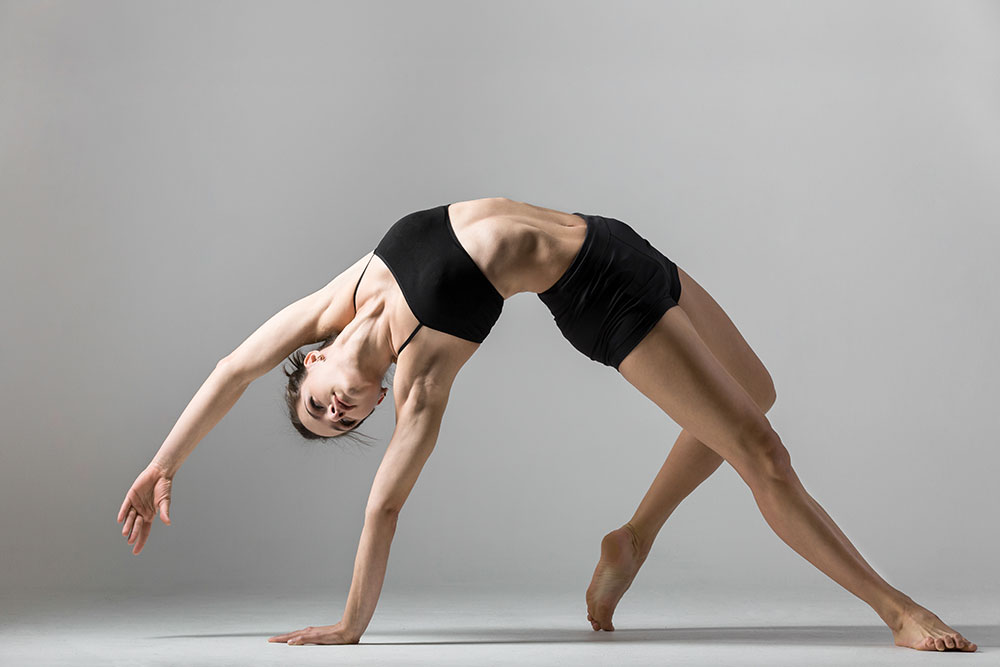
While we’ve gone through the benefits of both yoga and weight training, many different practitioners and trainers actually encourage yoga with weight training.
Weight training has its own benefits of building muscle mass and isolating specific muscle regions while yoga can provide the additional ease of mind and consciousness of breathing.
When combined, you add more variety in your workout, causing you to see faster results.
Overall, the best poses in yoga to build muscle and tone different parts of your body include challenging arm balances and inversion poses.
These poses flex both the smaller muscle groups as well as the major muscle groups.
This allows your body to condition those muscular regions to support the rest of your body weight.
As you practice regularly, you will start to feel like you can hold these poses for a longer amount of time, enhancing your practice and endurance.
If you’re looking to strengthen specifically your leg muscles, holding standing poses like Warrior Poses and Triangle Pose are a great way to go.
Balance poses like Tree Pose also increase strength in your lower body but need to be evened out as you’re balancing on one leg at a time.
If you’ve never done yoga before and are only familiar with strength and weight training, remember to start slow.
Don’t dive right into the advanced postures.
Your body will need time to adjust to these different variations as yoga utilizes more planes of motion and focuses on eccentric contraction.
And lastly, remember that yoga is not a fast track exercise routine to attain quick results.
Yoga really is a process that requires daily commitment and encourages a philosophy of living that enhances your practice in all realms.
But if you’re truly over the hype of dumbbells, weight machines, and resistance cords, and are looking for something new, try incorporating yoga in your practice to help your body build functional strength while lengthening and stabilizing the body.
What's Your Reaction?
Former nutrition specialist Alexandra Mackenzie knows what it means to support the body and mind through food. She’s passionate about sharing her wealth of knowledge with anyone willing to listen.






